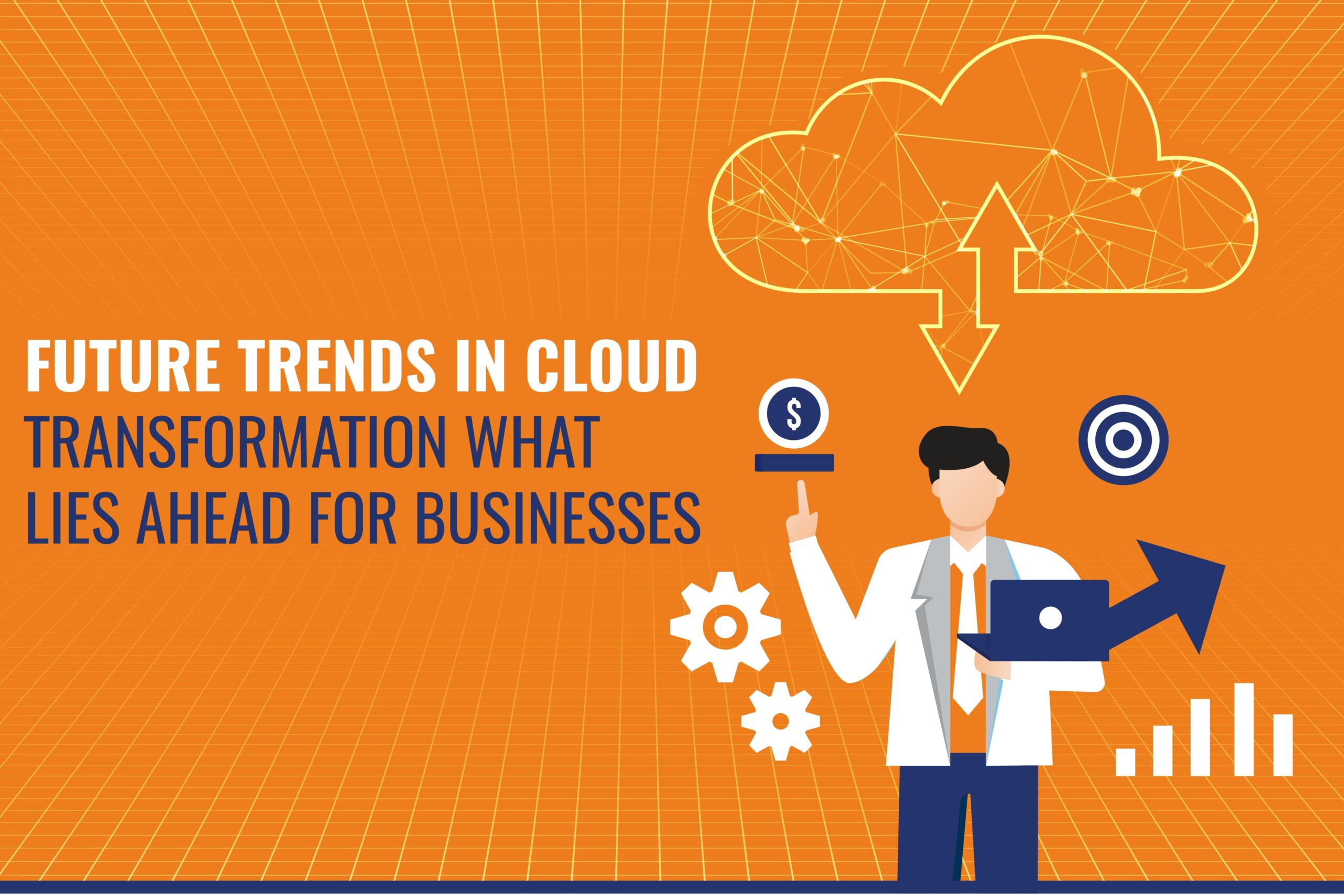
For enterprises, the cloud transformation of the future is incredibly promising and transformative. Several significant themes are expected to influence the future of cloud computing and its effects on organizations as technology develops. In order to capitalize on the advantages of various cloud providers, organizations will increasingly use multi-cloud and hybrid cloud strategies. Choose the cloud services most suited for specific workloads, this strategy gives flexibility, reliability, and the capacity to reduce costs. It ensures businesses are not dependent on a single source and can adjust to shifting customer demands.
Edge computing is transforming the way we process data and it brings data processing closer to the data source. This method is perfect for use cases like the Internet of Things (IoT), driverless cars, and intelligent infrastructure. It dramatically decreases latency and allows real-time applications. Businesses will use edge computing to improve user experiences and spur innovation.
Cloud service providers will keep improving their AI and machine learning capabilities, making it more straightforward for companies. It develops AI-driven apps and get valuable insights from their data. Various sectors will increasingly rely on AI to provide automation, predictive analytics, and improved decision-making.
Application development increases serverless computing in the firm. Businesses can concentrate entirely on code development without having to handle server infrastructure. This change shortens operational lead times, speeds up development cycles, and makes more resource allocation.
Businesses must be on the lookout for these developing trends in this age of fast technology innovation. Future success in the changing world of cloud computing will depend heavily on how to use these opportunities. Companies that effectively manage this environment will position themselves as leaders in their respective sectors. It helps to satisfy the changing requirements of stakeholders and customers. Strengthening cybersecurity and fostering sustainability will be integral to long-term success in the evolving cloud landscape.
For enterprises worldwide, the digital age has ushered in a transformational period. Cloud computing has become a key component of success in this ever-changing environment where innovation is crucial. It helps to adapt as a survival skill for development of the organization. Over the past ten years, the cloud has changed from trendy terms to a critical tool for efficiency, and resilience.
In this blog, we’ll set out on an analysis of the potential cloud transformation in the future. We will dig into the fascinating trends and breakthroughs just around the corner. It will highlight the way forward for companies looking to maximize the benefits of the cloud.
the process of transferring IT resources and workloads from traditional on-premises infrastructure to cloud-based solutions for an organization. Utilizing cloud computing for IT consulting services significantly changes how businesses access and control their technological resources. Independent cloud service providers offer cloud computing services.
Enhancing an organization’s agility, scalability, cost-efficiency, and competitiveness in the digital era are the main objectives of cloud transformation. Businesses can gain some advantages by switching to the cloud, including:
Businesses will be well-positioned to take advantage of the cloud’s transformational potential in the coming years. If they keep informed of these changes and modify their strategy accordingly. There are common trends of cloud transformation, which are discussed below.
The requirement for computational power at the network’s edge, near where data is created, is increasingly expanding. IT consulting services are essential for assisting businesses in using edge computing advantages. Companies may now use this technology more efficiently thanks to cloud providers extending their offerings. It includes edge computing capabilities into their platforms effortlessly.
A substantial improvement in computational capacity may be seen in quantum computing. Cloud service providers like IBM, Google, and AWS are aggressively investigating quantum computing as a service, enabling companies to experiment. It creates quantum applications in the cloud, even if it is still in its early phases. Cryptography, materials science, and optimization are just a few industries in which quantum computing might dramatically change.
Due to its ease of use and low cost, serverless computing, also known as Function, it’s becoming more popular. In a serverless architecture, programmers create functions that respond to particular events without worrying about managing the underlying infrastructure. Businesses will probably use this strategy for diverse purposes as serverless products become more adaptable and accessible.
Cloud computing has a promising future that helps to enhance the organization’s growth. Businesses and people increasingly use the cloud to store and manage their data due to the fast improvements in AI. The ability of AI-powered data analytics to spot patterns and trends. This would otherwise go undetected is one of the critical causes of this. Additionally, cloud-based AI systems can learn and develop over time, improving their ability to handle data. As a result, it is anticipated that demand for cloud-based AI services will increase in the upcoming years.
Cloud computing helps reduce the risks of cybersecurity. To safeguard client data and applications, cloud providers are investing significantly in developing cutting-edge security tools and features. Future developments will probably involve AI-driven threat detection, zero-trust security models, and thorough compliance solutions. It guarantees that enterprises can safely shift critical workloads to the cloud.
Both corporations and society are becoming more and more concerned about sustainability. To lessen their carbon footprint, cloud providers are concentrating on sustainability programs. They invest in environmentally friendly hardware, energy-efficient data center layouts, and renewable energy sources. Businesses may prioritize green cloud providers and services in the future if they support their sustainability objectives.
So, cloud computing and IT consulting services are related but distinct concepts in the world of technology and business. Businesses can access various tools and technologies to help them drive development, increase efficiency, and innovate in their particular sectors. These tools and technologies range from multi-cloud strategies to edge computing, AI integration, and serverless computing. Staying educated about these developments and adopting the appropriate cloud strategies will be crucial for organizations. Those who adapt and take advantage of cloud computing will be well-positioned to thrive in a market.. Visit our website for further details.
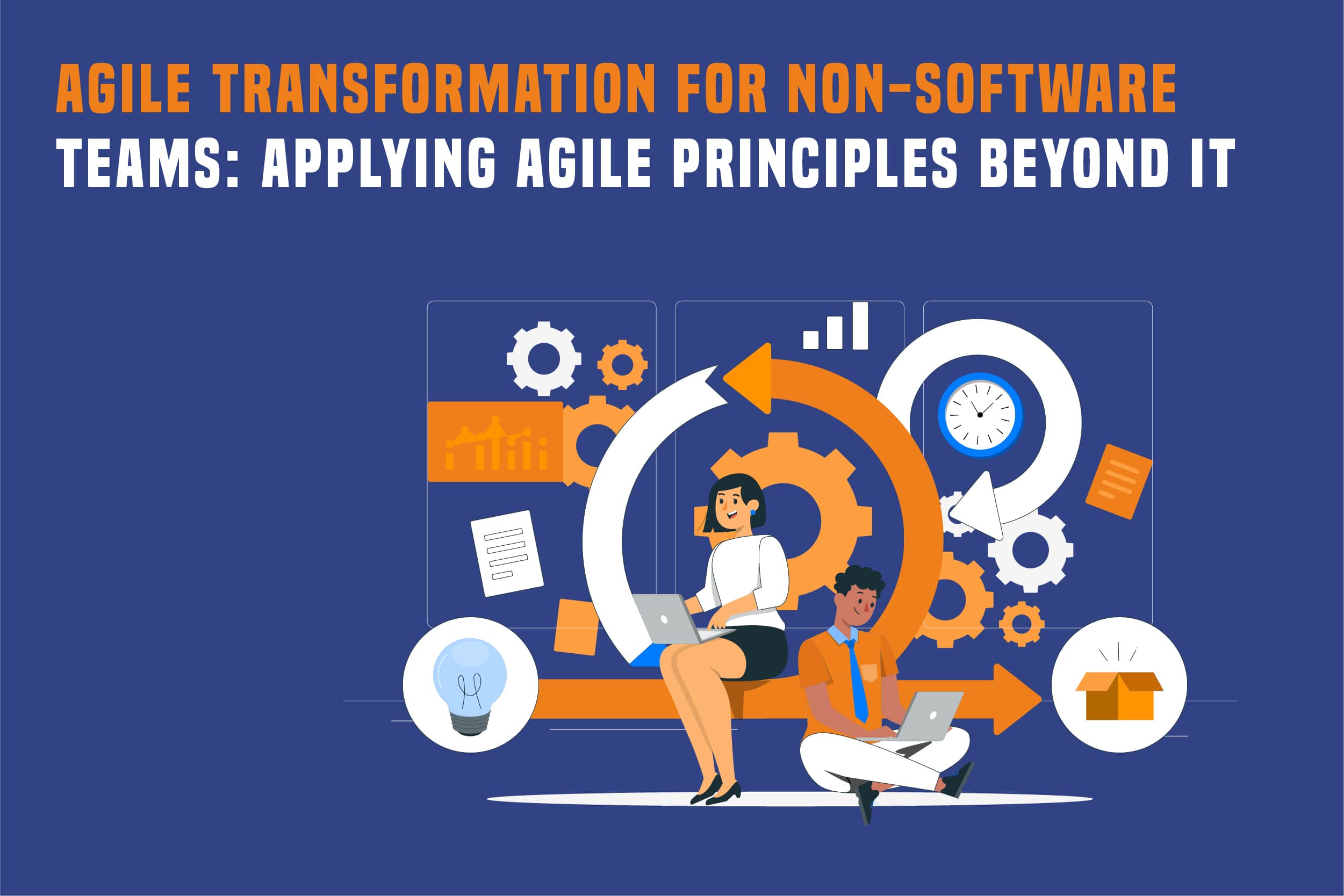
Agile transformation, once synonymous with software development, has now transcended its traditional boundaries, offering significant benefits for non-software teams across various industries and disciplines. Agile’s origins in software development have led to its widespread adoption across diverse teams like marketing, HR, finance, and operations.
At the core of Agile transformation for non-software teams lies the fundamental principle of agility—the ability to adapt quickly to changing circumstances and deliver value iteratively and incrementally. By embracing Agile principles such as customer collaboration, iterative development, self-organizing teams, and continuous improvement, non-software teams can enhance their agility, responsiveness, and effectiveness in achieving business objectives.
One of the key benefits of Agile transformation for non-software teams is improved collaboration and communication. Agile methodologies promote cross-functional collaboration, breaking down silos between departments and fostering a culture of transparency and accountability. By working collaboratively towards shared goals, non-software teams can leverage diverse perspectives and expertise to solve complex problems more effectively and deliver better outcomes for their organizations.
Non-software teams may also improve their capacity to react rapidly to shifting client demands and market conditions by implementing agile transformation. By adopting iterative and incremental approaches, teams can deliver value to stakeholders more rapidly, gather feedback early and often. It adapts their strategies and priorities based on real-time insights. This iterative method empowers non-software teams to adjust course as necessary, minimizing project failure risks and boosting chances of success.
Furthermore, Agile transformation fosters a culture of continuous improvement within non-software teams. By regularly reflecting on their processes, identifying areas for improvement, and experimenting with new approaches. So, teams can drive innovation, increase efficiency, and deliver more excellent value to their organizations. So, Agile transformation for non-software teams represents a paradigm shift in how organizations approach work and collaboration
Read More
Embarking toward SAP S/4HANA is a transformative step for any organization, promising enhanced efficiency, agility, and innovation. However, a smooth transition requires meticulous planning, thorough evaluation, and strategic guidance. This is where SAP consulting services play a pivotal role, offering expertise and support . So, it helps to navigate the complexities of migration and maximize the benefits of the new platform.
So, at the heart of the readiness assessment lies the SAP S/4HANA Readiness. Check Report, a comprehensive tool designed to analyze your current SAP landscape and determine the readiness for migration to S/4HANA. This report serves as a roadmap, guiding organizations through the various stages of preparation, from evaluating system compatibility to identifying potential challenges and opportunities.
One of the primary objectives of the readiness check is to assess the technical readiness of your existing SAP environment for migration to S/4HANA. This involves analyzing system components, customizations, and integrations to identify potential roadblocks or compatibility issues. The readiness check provides actionable insights into custom code optimization, data volume management, and infrastructure requirements.
In addition to technical readiness, the assessment also evaluates business processes and functionalities. This involves analyzing key business processes, dependencies, and user requirements to ensure alignment with S/4HANA capabilities.
Furthermore, the readiness check facilitates strategic decision-making by providing recommendations and best practices based on industry standards and SAP’s vast experience. Whether choosing the optimal deployment option or selecting the right migration approach. So, SAP consulting services offer invaluable guidance every step of the way.
Ultimately, the SAP S/4HANA Readiness Check Report serves as a cornerstone in the migration journey, empowering organizations to make informed decisions, mitigate risks, and unlock the full potential of SAP S/4HANA. With the support of SAP consulting services, organizations can confidently navigate the complexities of migration. So it ensures a seamless transition to the next generation of enterprise software.
Read More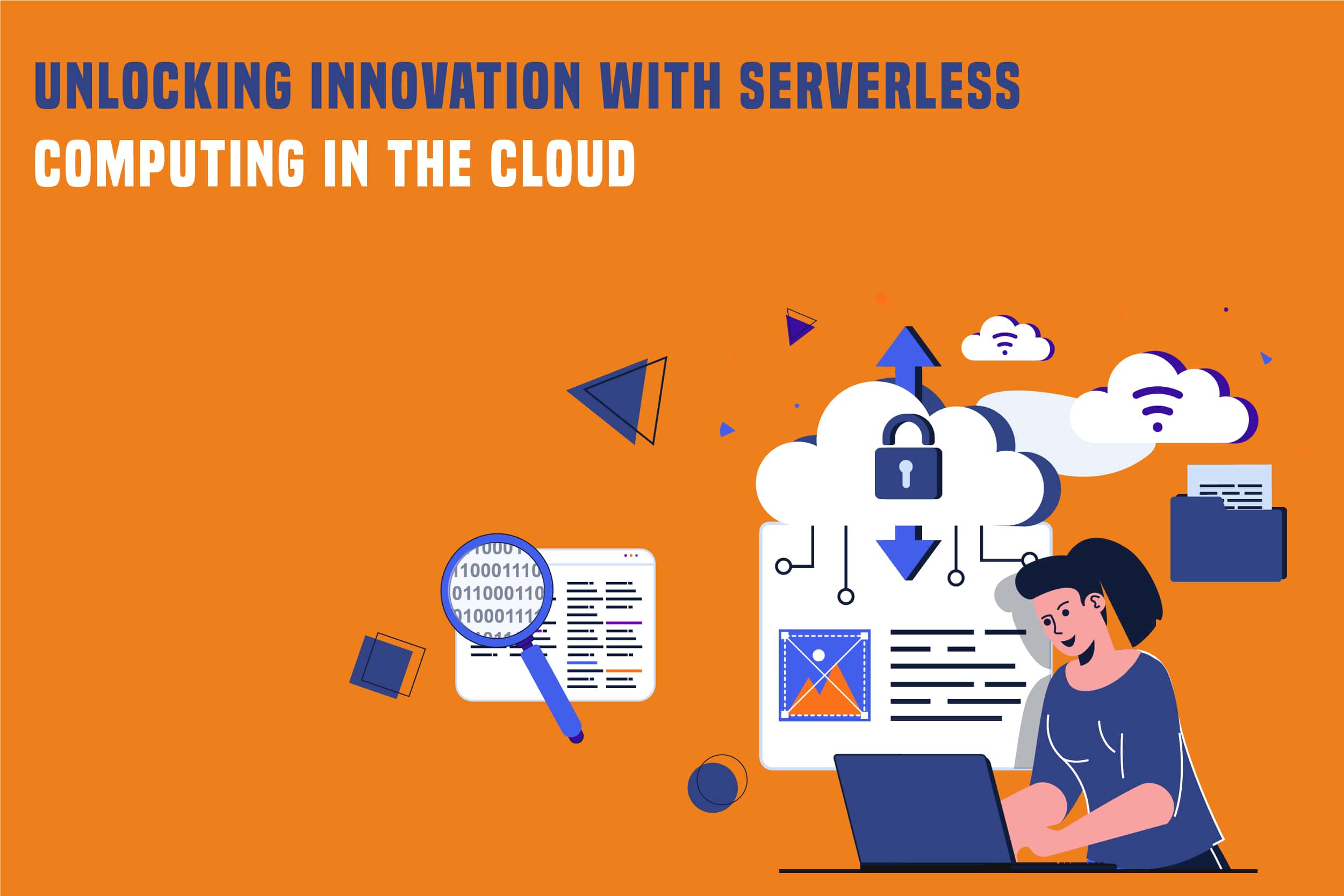
In the ever-evolving landscape of technology, cloud computing has emerged as a cornerstone for businesses seeking to innovate and stay competitive. Within this realm, serverless computing stands out as a revolutionary approach, redefining how applications are developed, deployed, and managed in the cloud. So, organizations can unlock new agility, scalability, and cost-efficiency levels by leveraging serverless architecture.
Additionally, serverless computing eliminates the need for organizations to provision and manage servers. It allows developers to focus solely on writing code to implement business logic. This paradigm shift enables organizations to accelerate innovation by streamlining development workflows. So, it reduces time-to-market, and empowering developers to experiment and iterate rapidly.
One of the critical advantages of serverless computing is its scalability on demand. So, cloud providers dynamically allocate resources to execute functions in response to workload fluctuations. So, ensuring optimal performance and resource utilization. This elasticity allows organizations to handle spikes in traffic or workload without manual intervention, supporting dynamic business requirements and scaling seamlessly as demand grows.
Moreover, serverless computing follows a pay-per-use pricing model, where organizations only pay for the actual compute resources consumed during function execution. This cost-effective pricing structure aligns with cloud transformation principles, enabling organizations to optimize spending. So it eliminates upfront infrastructure costs, and allocate resources more efficiently.
In addition to scalability and cost efficiency, serverless computing promotes innovation through its event-driven architecture. So, organizations can build highly responsive, real-time applications that react to events like HTTP requests. This model drives agility, empowering organizations to provide personalized experiences, adapt to user context, and seize emerging market opportunities effectively.
As organizations embark on their cloud transformation journey, embracing serverless computing becomes essential for unlocking innovation and driving competitive advantage. Utilizing serverless architecture enables organizations to innovate faster, scale seamlessly, and provide exceptional customer experiences in today’s dynamic business environment.
Read More
SAP Activate Methodology is a framework designed by SAP to streamline and accelerate the implementation of SAP solutions, ensuring successful business deployments. SAP Activate Methodology incorporates industry best practices, agile methodologies, and SAP’s extensive experience in software implementation. This summary discusses what SAP Activate Methodology entails, why it’s important, how it works, and where organizations implement it.
SAP Activate Methodology is a structured approach for implementing SAP solutions, encompassing various phases from planning to post-implementation support. It provides a comprehensive set of tools, templates, and guided procedures tailored to specific SAP products and deployment scenarios. These resources help project teams manage scope, reduce risks, and deliver business value efficiently.
SAP Activate Methodology helps organizations navigate this complexity by offering standardized processes and best practices. This methodology allows businesses to minimize project risks, control costs, and accelerate time-to-value. It also promotes stakeholder collaboration, fostering alignment between business objectives and IT initiatives.
SAP Activate Methodology consists of several phases those are Prepare, Explore, Realize, Deploy, and Run. During the Prepare phase, project teams define project goals, scope, and timelines. In the Explore phase, they conduct workshops to gather requirements and design the solution. So, The Realize phase configures and customizes the SAP system based on business needs. The solution is tested, deployed, and transitioned to end-users in the deployment phase. Finally, the Run phase focuses on supporting operations and continuous improvement.
Organizations deploying SAP solutions, such as SAP S/4HANA, SAP SuccessFactors, SAP Ariba, and others, implement the SAP Activate Methodology. It is applicable across various industries and business functions, including finance, supply chain, human resources, and customer relationship management.
SAP Activate Methodology is a comprehensive approach for SAP implementation solutions efficiently and effectively. So, organizations confidently navigate the complexities of SAP projects, achieving their business objectives. So, it helps to maximize the value of their investments by leveraging standardized processes, best practices, and collaborative tools
Read More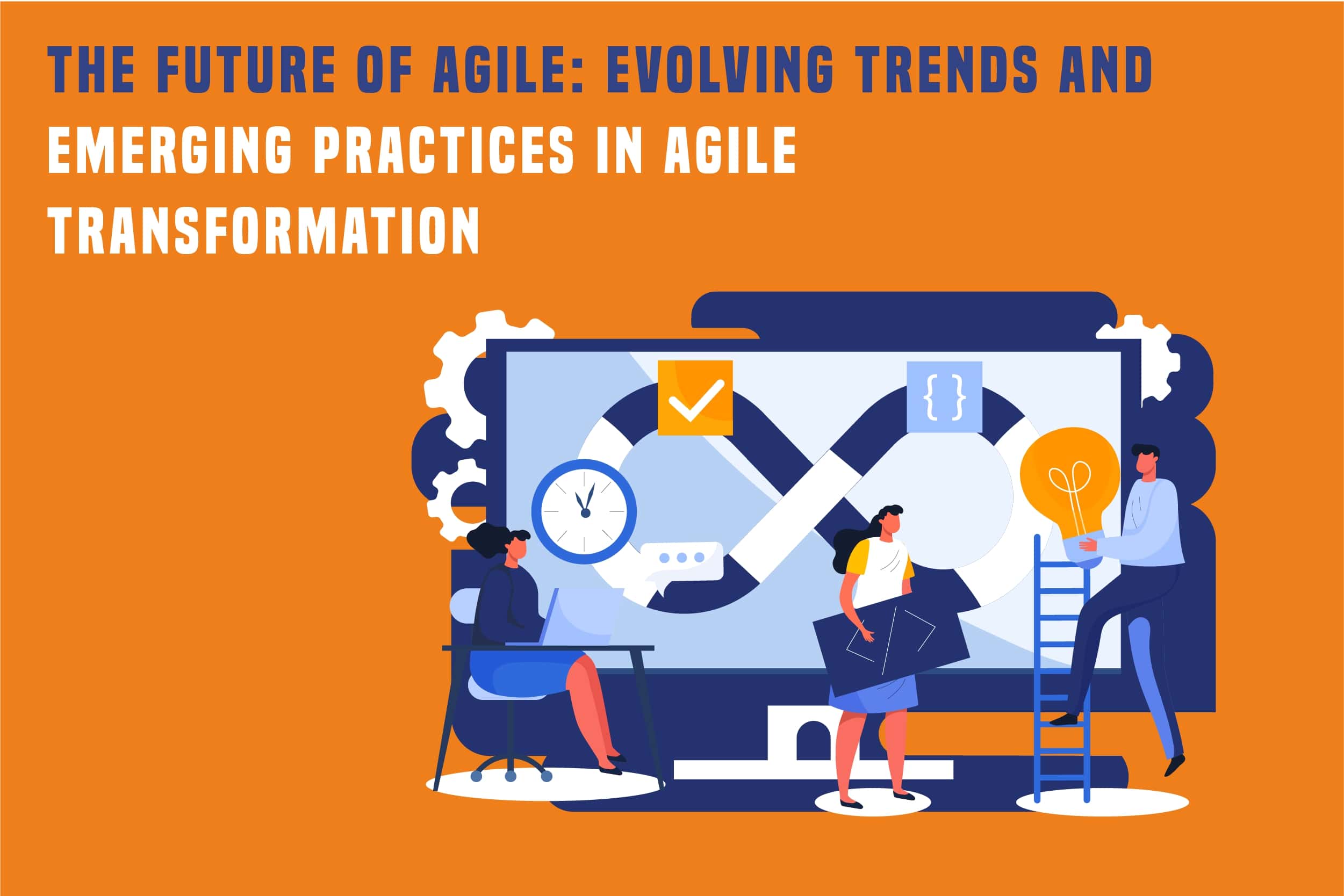
The future of Agile is an exciting frontier, marked by evolving trends and emerging practices that continue to redefine how organizations approach software development and organizational agility. As businesses navigate increasingly complex and dynamic environments, the principles and methodologies of Agile are undergoing rapid evolution to meet the demands of the modern digital landscape.
One of the key trends shaping the future of Agile transformation is the integration of Agile principles beyond traditional software development teams. Agile principles’ widespread adoption fuels enterprise-wide transformation, fostering seamless collaboration among cross-functional teams for faster, more efficient customer value delivery.
Another significant trend is the convergence of Agile with other disciplines such as DevOps, Lean, and Design Thinking. Combining the principles and practices of these complementary frameworks enhances the effectiveness of Agile transformation efforts, creating synergies within organizations. Similarly, Lean principles emphasizing waste reduction and value stream optimization can complement Agile practices by streamlining workflows and improving efficiency.
Emerging practices in Agile transformation are also reshaping how organizations approach key aspects of software development and delivery. For instance, there is a growing emphasis on outcome-based Agile metrics. It focuses on measuring business value and customer satisfaction rather than traditional metrics like velocity or story points.
Additionally, Agile transformation is increasingly being driven by a culture of continuous learning and experimentation. Organizations embrace practices such as Lean Startup and Design Thinking to foster innovation. This iterates on ideas quickly, and responds rapidly to changing market conditions.
So, the future of Agile transformation is characterized by a dynamic interplay of evolving trends and emerging practices reshaping how organizations approach software development and organizational agility. Organizations can lead by adopting trends, driving change, and seizing growth opportunities in a fast-paced digital landscape for success.
Read More
In today’s fast-paced business landscape, integrating artificial intelligence (AI) is revolutionizing organizations’ operations. From streamlining mundane tasks to optimizing complex processes, AI-powered automation offers unprecedented efficiency gains and competitive advantages.
Businesses across various industries are harnessing the power of AI to automate repetitive tasks, freeing up valuable human resources for more strategic initiatives. Whether it’s data entry, customer service inquiries, or inventory management, AI algorithms can handle these tasks quickly, accurately, and consistently, unmatched by manual efforts.
Optimizing operations is a major advantage of using AI to automate business processes. By analyzing vast amounts of data in real time, AI systems can identify inefficiencies, bottlenecks, and areas for improvement. This proactive approach allows organizations to optimize workflows, allocate resources more effectively, and deliver better outcomes with minimal human intervention.
Moreover, AI-driven automation enables businesses to respond swiftly to changing market dynamics and customer demands. With predictive analytics and machine learning algorithms, organizations can anticipate trends, forecast demand, and adjust their strategies accordingly. This agility improves operational efficiency and enhances customer satisfaction and loyalty.
In addition to operational efficiency, AI automation offers significant cost savings for businesses. By reducing manual labour and streamlining processes, organizations can lower overhead expenses, increase productivity, and achieve higher profit margins. Furthermore, AI-powered solutions often require less time and resources to implement and maintain compared to traditional software systems.
However, businesses need to approach Artificial intelligence implementation thoughtfully and strategically. Effective deployment of AI technologies requires careful planning, robust infrastructure, and skilled personnel. Moreover, organizations must address concerns related to data privacy, security, and ethical implications associated with AI-driven decision-making.
So, despite these challenges, the potential benefits of automating business processes with AI far outweigh the risks. From small startups to large enterprises, AI-powered automation is reshaping the future of work and driving business success.
Read More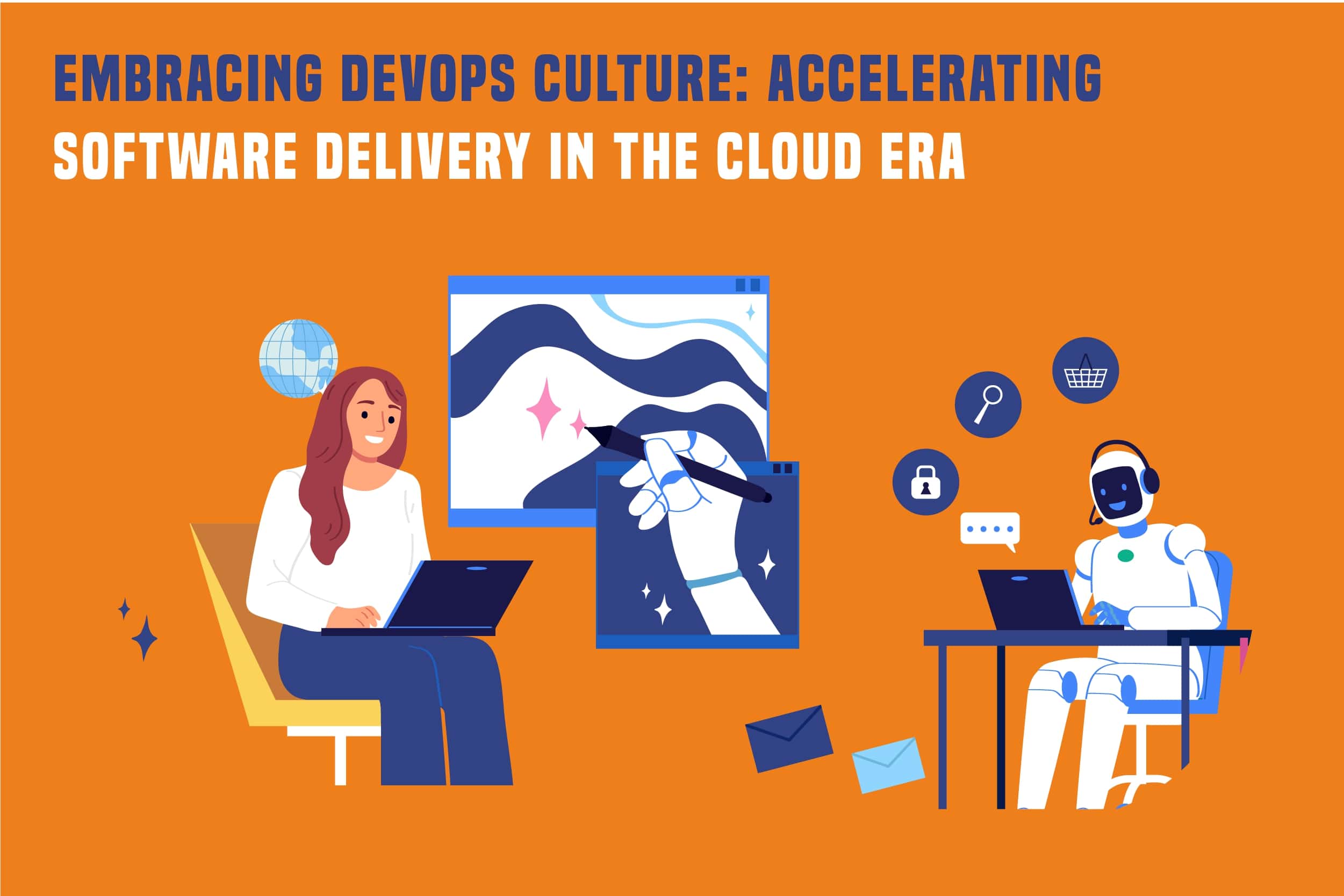
In today’s rapidly evolving technological landscape, embracing DevOps culture has become imperative for organizations striving to remain competitive. DevOps, a portmanteau of Development and Operations, represents a cultural shift that fosters collaboration between software development. IT operations teams, aiming to automate and streamline the software delivery process. This collaboration accelerates software development and deployment, enabling organizations to respond swiftly to market demands and customer feedback.
The advent of the cloud era has revolutionized how software is developed, deployed, and managed. Cloud transformation has provided organizations with scalable infrastructure, on-demand resources, and unparalleled flexibility. So, it is empowering them to innovate rapidly and deliver value to their customers with unprecedented speed.
Organizations can achieve several vital benefits by embracing DevOps culture in the cloud era. They can accelerate the development lifecycle, from code commit to production deployment, by automating repetitive tasks and implementing continuous integration and delivery (CI/CD) pipelines. This enables teams to rapidly deliver new features and updates to customers, enhancing competitiveness and customer satisfaction.
Furthermore, DevOps practices coupled with cloud transformation enable organizations to optimize resource utilization, reduce infrastructure costs, and enhance scalability. With cloud-native technologies such as containers and serverless computing, teams can deploy applications more efficiently. So, scale resources dynamically based on demand, and achieve higher levels of availability and reliability.
Moreover, DevOps empowers teams to embrace a culture of continuous improvement and experimentation. It is encouraging iterative development, feedback loops, and data-driven decision-making. By embracing failure as an opportunity to learn and innovate, organizations can foster a culture of resilience and adaptability, driving business growth.
So, embracing DevOps culture in the cloud era is essential for organizations seeking to accelerate software delivery, innovate rapidly, and thrive in a competitive marketplace. By combining DevOps principles with cloud transformation, organizations can unlock. The new opportunities for growth, agility, and success, positioning themselves as leaders in their respective industries.
Read More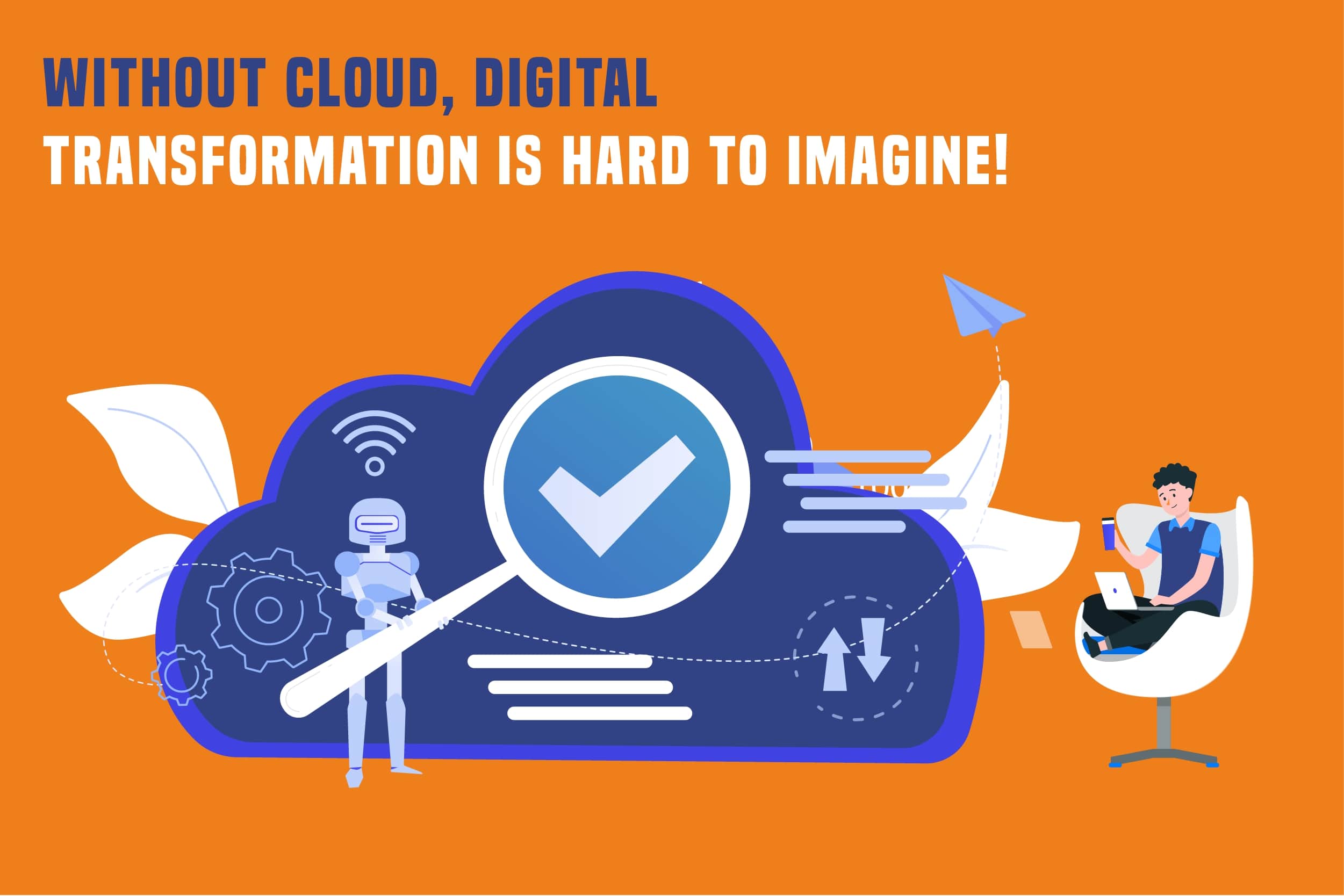
In today’s rapidly evolving digital landscape, digital transformation has become synonymous with progress and innovation. Cloud computing, a revolutionary technology that has reshaped how businesses operate, collaborate, and deliver value to their customers, is at the heart of this transformation.
Digital transformation is leveraging digital technologies to change how businesses operate and deliver value to customers fundamentally. It encompasses many initiatives, including adopting new business models, streamlining processes, enhancing customer experiences, and driving innovation.
One of the key benefits of cloud computing is its ability to provide on-demand access to the organization. This scalability is particularly valuable for businesses undergoing digital transformation, as it enables them to quickly adapt to changing market conditions and customers. Computing resources, such as storage, processing power, and applications, over the Internet for the growth of the organization. This removes the necessity for businesses to purchase costly hardware and software, enabling flexible scalability in operations according to demand.. This scalability is particularly valuable for businesses undergoing digital transformation, enabling them to adapt to changing market conditions and customer needs quickly.
Furthermore, cloud computing offers agility and flexibility that traditional IT infrastructure cannot match. This agility is essential for driving innovation and staying ahead of the competition in today’s fast-paced digital economy. Another significant advantage of cloud computing is its ability to enable collaboration and remote work. This is particularly relevant in digital transformation, as it allows organizations to tap into a global talent pool and collaborate with partners and customers across geographic boundaries.
Moreover, cloud computing enhances data security and resilience, critical considerations for businesses undergoing digital transformation. Additionally, cloud-based infrastructure offers built-in redundancy and disaster recovery capabilities, minimizing the risk of data loss or downtime. So, cloud computing is indispensable for digital transformation in today’s business landscape. Embracing the power of the cloud is essential for businesses looking to thrive in the digital age.
Read More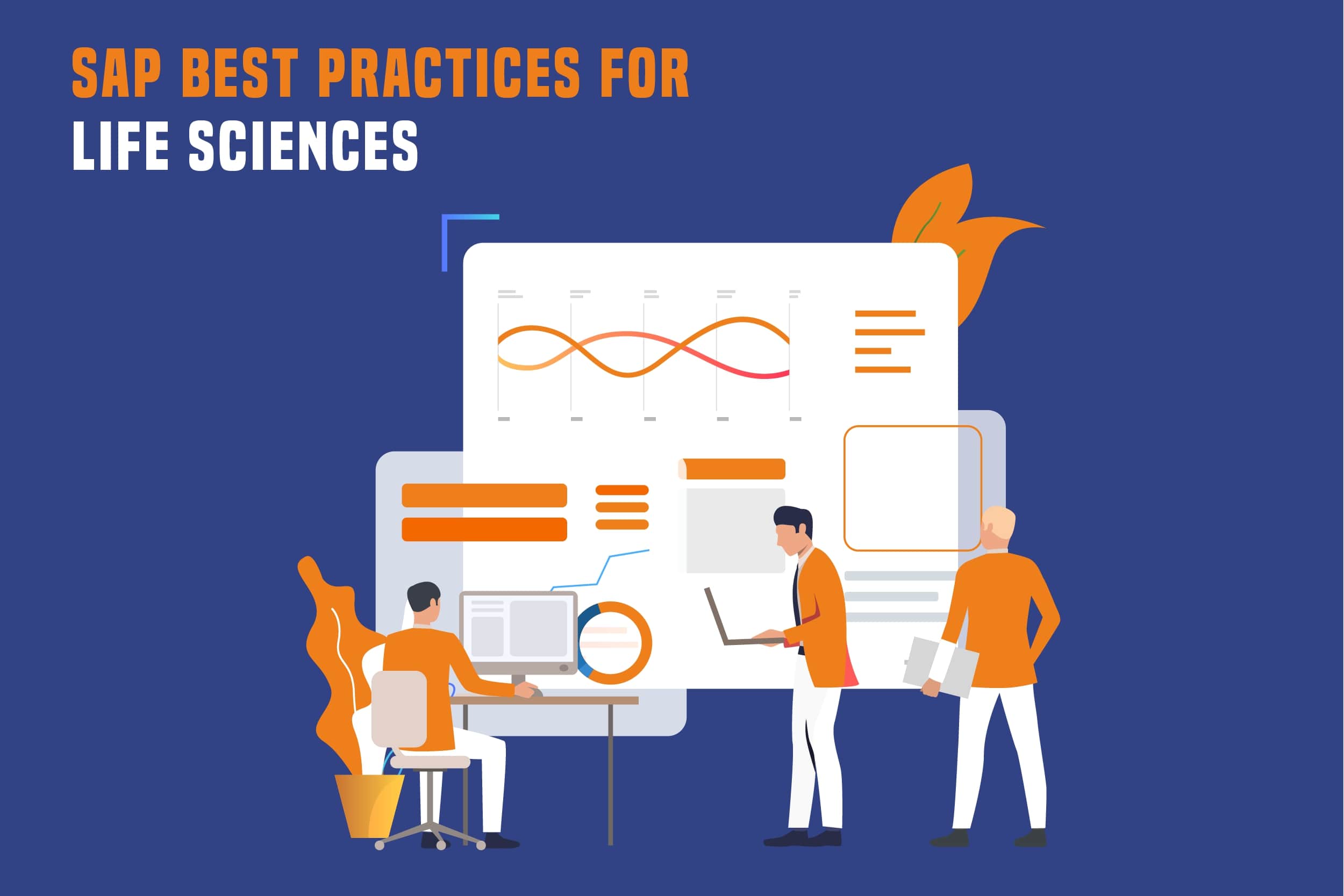
SAP Best Practices for Life Sciences offers a comprehensive set of industry-specific solutions designed to address the unique challenges faced by companies in this sector. Leveraging SAP’s extensive experience and expertise in enterprise resource planning (ERP), these best practices are tailored to meet the specific needs of life sciences organizations, including pharmaceutical companies, medical device manufacturers, and more.
One of the key advantages of SAP Best Practices is their ability to streamline processes and increase operational efficiency. This allows organizations to quickly realize the benefits of their SAP investment and adapt to changing market conditions more effectively.
In addition to improving operational efficiency, SAP Best Practices also help life sciences companies ensure compliance with industry regulations and standards. SAP solutions offer robust features for managing quality control, regulatory reporting, and compliance documentation, enabling organizations to maintain the highest standards of product safety and efficacy while reducing the risk of non-compliance penalties.
Another critical aspect of SAP Best Practices for Life Sciences is their support for innovation and growth. SAP’s platform enables digital transformation, leveraging AI, ML, and IoT to innovate product life cycles, fostering business growth.
Furthermore, SAP Best Practices enable greater visibility and collaboration across the value chain. By integrating core business functions such as supply chain management, sales and marketing, and finance. So, SAP implementation solutions provide real-time insights into critical business processes, enabling better decision-making and faster response to market demands.SAP Best Practices for Life Sciences offers a comprehensive suite of industry-specific solutions allowing organizations to optimize their operations, ensure compliance, drive innovation, and enhance collaboration across the value chain. Life sciences firms speed up digital transformation and secure future success in changing markets with SAP’s expertise and best practices.
Read More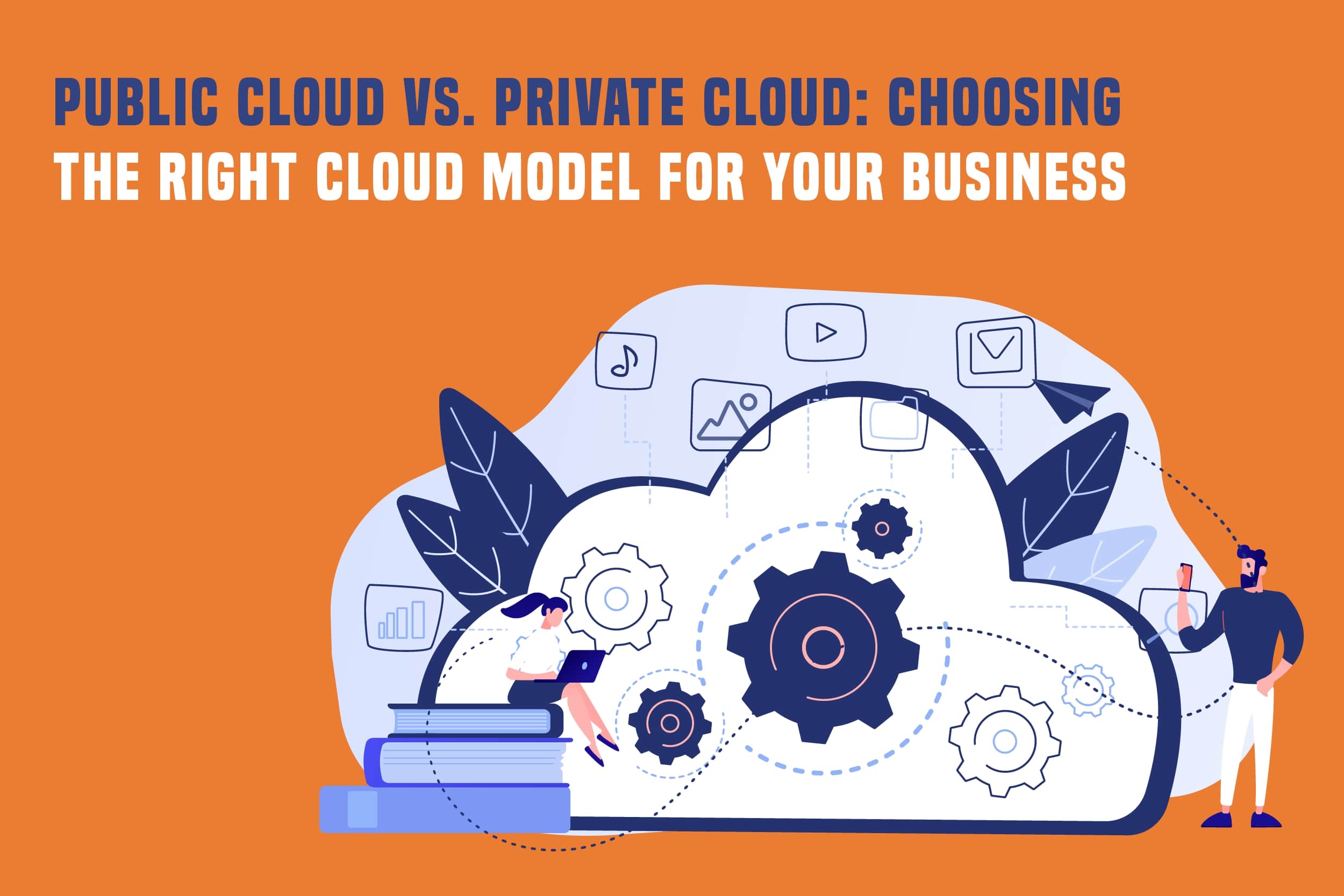
Cloud transformation is a pivotal decision for businesses, often involving the choice between Public Cloud and Private Cloud models. Each has advantages and considerations, and selecting the suitable model is crucial for meeting specific business needs.
Public Cloud services are provided by third-party vendors, offering a shared infrastructure accessible over the Internet. This model demonstrates scalability, cost-effectiveness, and rapid deployment capabilities.. So, Organizations can leverage resources on a pay-as-you-go basis, avoiding the need for substantial upfront investments. However, concerns about data security, compliance, and limited customization can be significant considerations.
On the other hand, Private Cloud is a dedicated infrastructure operated solely for a single organization. This model provides greater control over security, compliance, and customization, making it suitable for industries with stringent regulatory requirements or sensitive data.
The decision between Public and Private Cloud is not necessarily binary; many businesses opt for a hybrid approach. Hybrid Cloud combines Public and Private Cloud environments, allowing organizations to balance performance, security, and cost-effectiveness. This approach is particularly beneficial for businesses with diverse workloads, as it enables them to utilize the advantages of both models.
Key factors influencing the choice between Public and Private Cloud include the nature of the business, regulatory requirements, data sensitivity, and budget constraints. A thorough assessment of these factors and a clear understanding of the organization’s long-term goals are essential for making an informed decision.
Cloud transformation is not a one-time event but an ongoing process. Regular evaluations and adjustments are necessary to ensure that the chosen cloud model continues to align with the evolving needs of the business. Whether opting for the flexibility of the Public Cloud, the control of the Private Cloud, or a Hybrid Cloud solution. To remain competitive in today’s changing digital market, businesses must prioritize a smart and well-executed cloud transition.
Read More
Leave a Reply